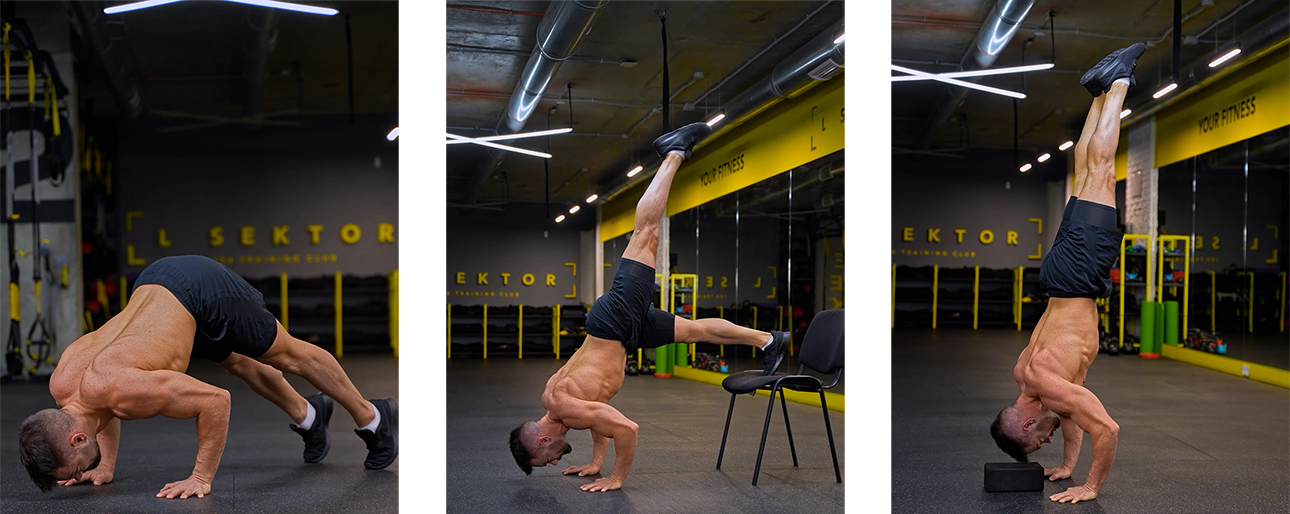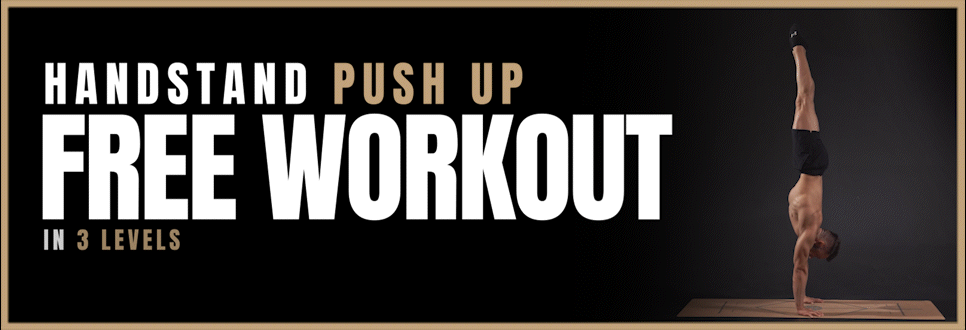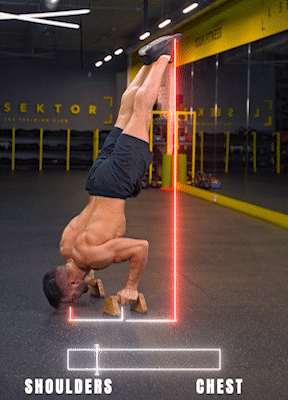How to Handstand Push Up
The handstand push up is an element that combines balance and strength. It can be used to improve raw strength, gain superior control in your handstands and for body weight bodybuilding. Handstand push ups can be performed on the floor, parallettes, gymnastic rings and really anywhere else where you can place your hands. While Handstand Push Ups are great goal moves such as the bend arm press to handstand and the headstand push up can be picked up along the way and mastering the handstand push up opens the door to more advanced drills such as 90 degree push ups.
Let’s get precise
Just like in the shoulder or military press with weight the muscles involved in the handstand push up depend on the amount of lean. The straighter that you will keep your body the heavier the movement will rely on the anterior deltoids. The more you lean back in the sitting military press and the more you let your body slide towards the planche the more weight your chest will take. As an extreme example of full lean we have the bench press and planche push up.


How to train
Just like a press to handstand a full HSPU requires you to be fairly comfortable in your freestanding handstand. Yet most drills to learn and train for the HSPU do not require you to hold a freestanding handstand. It is not just possible but I would actually strongly recommend to start training for your HSPU before being able to hold and control a freestanding handstand. The extra strength will help you balance your handstand plus the extra work will help you develop technical understanding and body awareness.
Make sure to always train your strict handstand technique before working on your HSPU conditioning drills. You can even do them in 2 fully separate sessions. Always make sure to warm up well and to include injury preventing prehab exercises in each workout.
When planning your workout schedule keep in mind that HSPU conditioning is a strength based workout and you should give your muscles 48h to recover between each session whilst strict technique training can be done almost daily (up to 6 days a week) as you won’t be pushing your muscles as much.
When training for the HSPU I recommend using as many progressions as possible. This comes with a variety of advantages. By going through lots of baby steps you will avoid hitting and getting stuck on plateaus, workouts won’t be as monotone and with that will stay fun longer, you will avoid overload injuries as pressure will increase more gradually, you will gain more awareness and coordination as your body will be challenged in different ways and you will pick up free moves along the way such as the bent arm press to handstand.
When working on progressions for the HSPU the basic idea is to gradually place more weight on the hands starting in a downward dog like position before finishing in the proper handstand push up. Common progressions to pass through are: Downward dog(pike), Downward dog with elevated feet, L HSPU, L HSPU with elevated hands, back to wall HSPU, Chest to wall HSPU, partial freestanding HSPU and finally the actual HSPU.
There are a couple different strategies to break through possible plateaus. You can for example add weight to an easy progression to make it challenging again, you can elevate the hands to increase the range of motion, you can do simple negatives where you try to slow down as much as possible staying in control the entire time, you can lower in a harder progression and push back up in an easier one (L Handstand Push Ups for example where you place the knees on the box on the way back up) or you can do drop sets. There is literally no limit to how creative you can get which makes training for and with the handstand push up exciting and fun.

What's next
The road to the freestanding Handstand Push Up is long and the feeling when first accomplishing a clean HSPU is truly incredible yet it is only the beginning of your road towards more advanced calisthenics progressions. There are plenty of ways of how one can increase difficulty to continue improving and growing. One can for example add weight by wearing a weighted vest. Here make sure to use a vest with attached weights. You are going upside down and definitely don’t want these weights to fall out and onto your hands or head. Another way of increasing difficulty in the HSPU is to elevate the hands giving your head the ability to travel lower and further than on the floor. This can be done either by placing the hands on a bench, parallettes or P Bars. Keep in mind that different hand positions do create an additional challenge to balance making it difficult to evaluate strength. If you are training on a bench try to find a bench with a hard surface. Regular weightlifting benches are somewhat soft to provide comfort for the back and therefore don’t make a great surface for HSPUs.
So as you can see the Handstand Push Up is awesome and the field and utility of handstand push ups is wide. Mastering the handstand push up can give you direction in training for years. The further you advance in your handstand push up training you will realize the first rep is only the beginning of an even longer and wider road to advanced calisthenics skills.
Go slow and advance through the progressions. Always keep in mind. A goal is a milestone at best but never a final destination.





